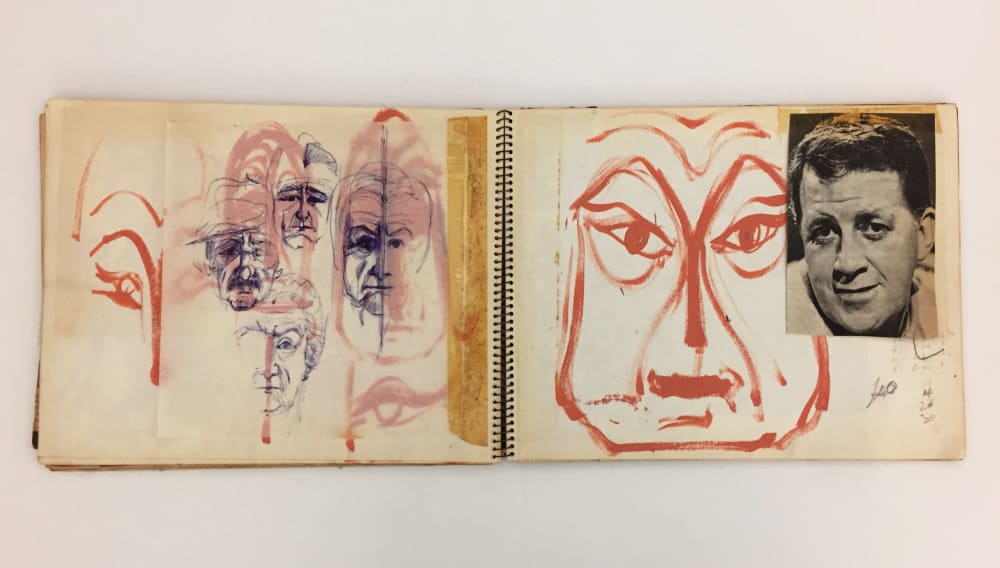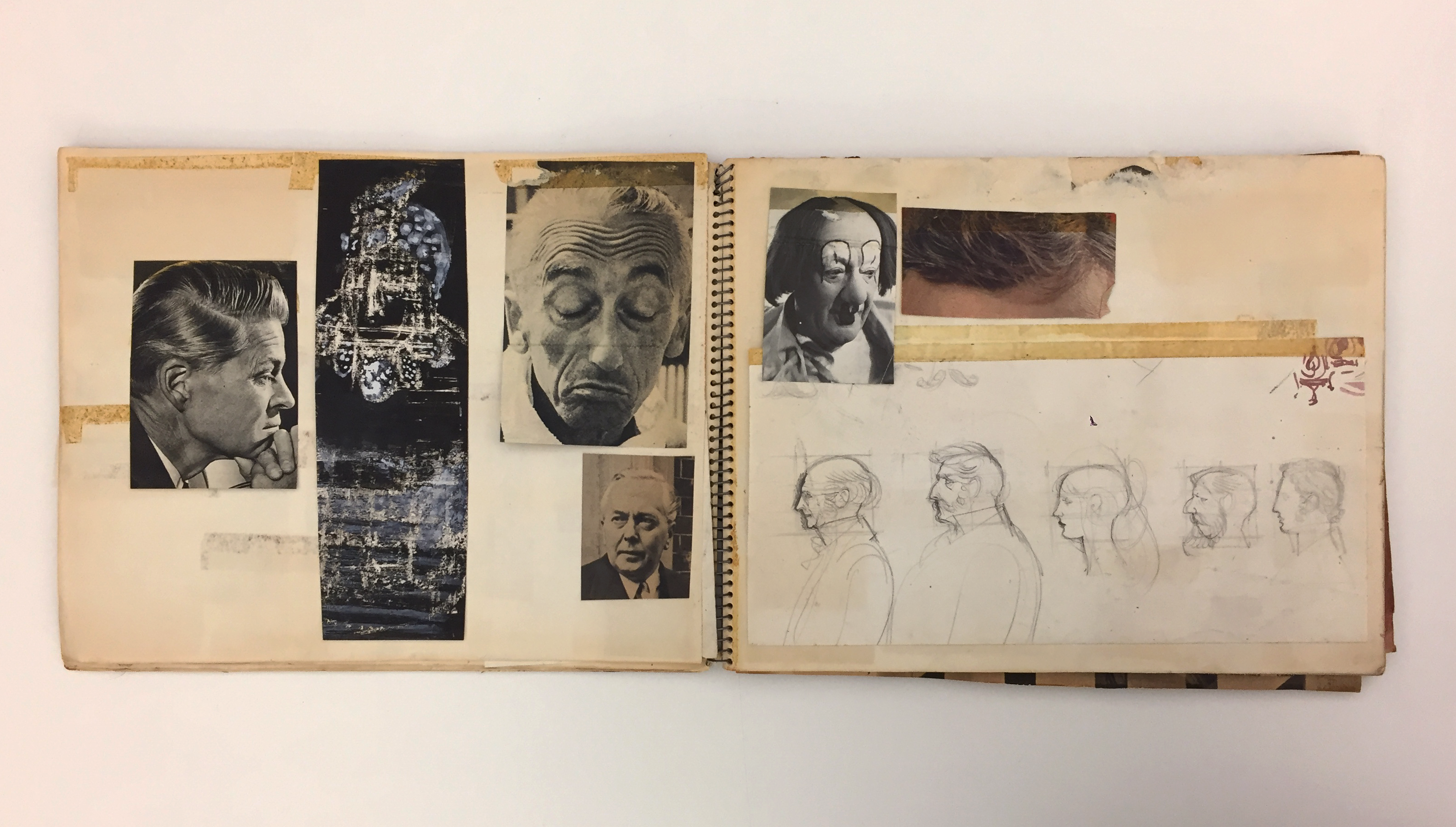This blog has been written by one of the Archives and Special Collections Centre volunteers, Joy Cuff, who worked with Stanley Kubrick on 2001: A Space Odyssey and has donated some of her own materials to create the Joy Cuff Archive. Our volunteers are working with us remotely during the COVID-19 pandemic.
Discovering the archive
My introduction to the Stanley Kubrick Archive was in 2007 – a friend who worked at the University of the Arts London (UAL) told me that the Archives and Special Collections Centre (ASCC) had received 100 boxes from the Kubrick estate (I’ve not had a television since 1990, so am not always up with London news!)
So, we booked to visit, and at the archives I was invited to pick 2 boxes out of the 100 - I chose something like no. 33 ‘Miscellaneous’ and no. 84. ‘Polaroids’. In the first box I fingered through, I found one of my drawings of a design for the moon surface model from 2001: A Space Odyssey with foreground, middle distance and back ground indicated. The second box revealed Polaroid photos of the moon models - a cold shiver ran up my spine, how very spooky.
I was 21 when I started work on 2001, and was now remembering the amazing experiences I had had in those 18 months of working with Kubrick. I was really hooked by the archive, Stanley Kubrick and all his films are important to film making history, but 2001 particularly has fired so many imaginations and this film has so many followers. I started to visit once every two weeks and sorted the 35mm film slides, then I sorted the 65mm slides, followed by 2 ¼ from the Hasselblad and finally the Polaroid’s. I have also donated my own material to the archive, including scrap books and some large bromides of the moon sets from 2001. I have gradually bought into the archives more memorabilia from my studio.
Follow us
Contact us

Filling in the gaps
Whilst working on this material, I found there were items labelled with names that nobody at the time knew the meaning of, such as ‘the sausage factory’, ‘purple hearts’, ‘slit-scan’ and ‘French bedroom’. But I knew what the common descriptive titles referred to. This had not been general knowledge at that point, now I see they are all over the web.
As the 50th anniversary of 2001 neared, lots more research was underway so more knowledge was being unearthed. But with that many errors. For example, about the ‘French bedroom’ set; it was called the ‘French bedroom’ by technicians on set, but the call sheets just called it the ‘Bedroom’. The set was known to be modelled on the Dorchester Hotel’s French style bedroom, and there are some theories that Kubrick stayed in this room while filming 2001. However, he had actually stayed in the hotel while visiting London with his family years previously. At the time of filming Kubrick lived with his family quite near Borehamwood! But he did put up important visitors and some actors at the Dorchester.
Being a volunteer
Most recently I was looking through reviews on 2001, which still continue in the present day, and putting them in chronological order. But I frequently got diverted by reading the copy, which is a very time-consuming job - ideal for a volunteer! Sometimes I would stumble across an answer to a query that had been presented in the past.
I’ve learned how to describe material in a particular manner for archive researchers, as in a limited space there is the need to write descriptions in a certain way. This was a new skill for me, my last year at school was 1959/60 when I then went to art school to paint, sculpt, and draw. There were no computers, and most things were written by-hand.
Frequently I get involved in discussing with students’ different aspects of the film and what I did or how. I find it very interesting to meet the students and to be allowed to delve into the history of Stanley’s own archives, and I feel privileged to be able to pass on whatever knowledge I have of this time.
The Stanley Kubrick Archive and Joy Cuff Archive can be accessed by appointment in the Archives and Special Collections Centre, see our website for further information.

